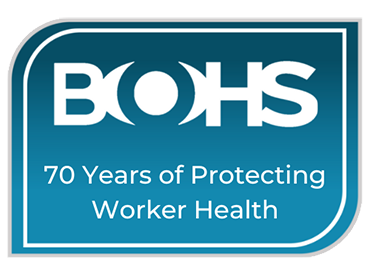Why Engineered Stone Poses a Serious Silicosis Risk
Engineered stone, commonly used in kitchen countertops, bathrooms, and commercial surfaces, offers superior durability and aesthetic appeal. But behind its sleek finish lies a major occupational health risk: respirable crystalline silica (RCS). Workers who cut, grind, polish, or drill engineered stone are exposed to high concentrations of silica dust, which can cause a devastating lung disease known as silicosis.
With engineered stone typically containing over 90% crystalline silica, exposure levels can far exceed those from natural stone like granite or marble. This article explores how engineered stone silicosis develops, what symptoms to look for, regulatory requirements, and proven solutions to mitigate exposure.
What Is Engineered Stone?
Engineered stone is a composite material made from crushed quartz, resins, and pigments. It's popular for its non-porous nature and resistance to stains and scratches. However, its high quartz content makes it particularly hazardous when mechanically processed.
Engineered Stone Silicosis: Key Health Risks
Respirable Crystalline Silica (RCS)
When engineered stone is cut or abraded, it releases microscopic RCS particles. Prolonged inhalation of this dust can lead to:
-
Silicosis – A progressive, irreversible lung disease that causes scarring and stiffness of lung tissue.
-
Chronic Obstructive Pulmonary Disease (COPD) – Includes bronchitis and emphysema, which restrict airflow.
-
Lung Cancer – Long-term exposure to high levels of silica dust is classified as a human carcinogen by IARC.
Volatile Organic Compounds (VOCs)
Resins used in engineered stone can emit VOCs, especially under heat or mechanical stress. VOC exposure is linked to:
-
Short-term: Irritation of eyes, nose, and throat, dizziness, headaches.
-
Long-term: Damage to the central nervous system, liver, and kidneys.
Fine Dust Exposure
Even aside from silica and VOCs, engineered stone work generates airborne fine particulates. In enclosed, unventilated workspaces, these particles can contribute to respiratory stress and systemic inflammation.
UK Regulations for Engineered Stone Safety
The Health and Safety Executive (HSE) mandates strict control measures to protect workers exposed to RCS:
-
COSHH Regulations 2002 – Requires risk assessments and exposure control strategies.
-
Workplace Exposure Limits (WELs) – Enforces exposure thresholds for RCS and VOCs.
-
Health Surveillance – Mandates regular lung health checks for at-risk workers.
Silicosis Prevention Measures for Engineered Stone Work
Apply the Hierarchy of Controls
-
Eliminate – Use alternative materials with lower silica content.
-
Substitute – Replace dry-cutting with wet-cutting methods.
-
Engineering Controls:
-
Wet Cutting – Uses water to suppress dust at the source.
-
Local Exhaust Ventilation (LEV) – Captures airborne contaminants before they spread.
- Worker training and awareness.
- Task rotation to limit exposure time.
- Health surveillance programs.
PPE:
- FFP3 Respirators with face-fit testing.
- Dust-resistant protective clothing.
Real-Time Monitoring and Detection Tools
Dust Detection: Trolex AIR XS Silica Monitor
The Trolex AIR XS delivers real-time, RCS-specific monitoring using Optical Refraction Technology (ORT). It provides accurate silica concentration data on the display and via Trolex Breathe software. Available from Shawcity for hire or purchase.
VOC Detection: Tiger XT VOC Monitor
The Tiger XT PID (photoionisation detector) from Ion Science offers precise VOC monitoring. It's ideal for environments where resins and adhesives are used alongside engineered stone.
Training and Worker Awareness
No control measure is effective without proper training. Employers should offer comprehensive education on:
-
Health risks of engineered stone.
-
Proper use of RPE and engineering controls.
-
Early symptom identification for silica exposure.
FAQs About Engineered Stone and Worker Safety
Q: What are the early symptoms of silicosis?
A: Persistent coughing, shortness of breath, chest tightness, and fatigue.
Q: Is engineered stone banned anywhere?
A: Yes. Due to a spike in silicosis cases, Australia has banned engineered stone imports and fabrication starting January 2025.
Q: Can engineered stone be used safely?
A: Yes - with strict adherence to exposure controls, real-time monitoring, and proper training, risk can be significantly reduced.
Q: How often should air quality be checked?
A: Continuously in high-risk areas, with periodic reviews to ensure compliance with WELs.
Conclusion: Engineered Stone Is Useful—But Not Without Risk
Engineered stone continues to be a preferred choice in construction and design, but it comes with serious health risks if mishandled. By understanding engineered stone silicosis, enforcing HSE guidelines, investing in real-time detection tools, and promoting a safety-first culture, employers can safeguard their teams and meet compliance obligations.
More Resources
For expert advice or to explore monitoring solutions, contact Shawcity:
📞 01367 899553
📧 solutions@shawcity.co.uk
More Resources on working safely with silica


.jpg?width=1280&height=720&name=engineered%20stone%20(2).jpg)
.jpg?width=1280&height=720&name=engineered%20stone%20(3).jpg)

.jpg?width=1280&height=720&name=engineered%20stone%20(1).jpg)

-1.png)









